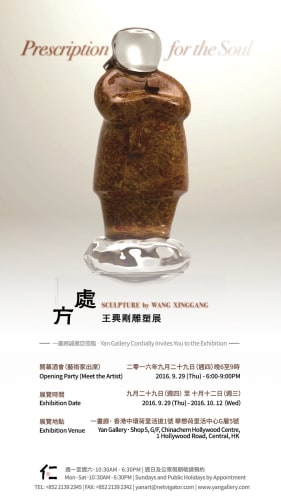Prescription for the Soul 處方: Sculptures by Wang Xinggang 王興剛雕塑展
“…有時打開所有的‘抽屜’,發現並未找到你所要的東西
——王興剛自述
“…We are always trying to understand each other, but sometimes when we open all the ‘Drawers’, we find that we still haven’t found what we are looking for. This is normal feedback for the average person. This person represents the accumulation of his past experiences, memories, and emotions. All of these have been stored in the drawers, which can either hold a lot or a little depending on one’s degree of enlightenment. Some people let go of the things they should let go of and we find that the drawer is empty. Empty and non-empty are the same, existence and non-existence are not opposites.”
——Artist Wang Xinggang
“王興剛的《處方》適合用虛與實來談論,因為這個系列的
——彭鋒 《虛與實—讀王興剛的系列雕塑“處方”》
“Prescription lends itself to discussion in terms of positive and negative, as the series is inherently comprised of positive and negative elements. In this series, he has sculpted the forms of a worker, farmer, businessman, scholar, soldier and an official, each of which has carved in it empty drawers which can be pulled out. It is precisely the space in these drawers that creates the negative in these sculptures. Such treatment of space is quite uncommon in contemporary sculpture. What do the empty drawers imply? Why has he carved out drawers in the human body rather than something else? And given that he has taken the effort to sculpt out the drawers, why doesn’t he put anything inside? I believe that anyone looking at Wang Xinggang’s works will have a myriad of questions to ask. Wang Xinggang’s works not only invite the viewer to observe visually, but also to contemplate, and it is this visual observation combined with contemplation that in turn cleverly create yet another form of positive and negative.”
——Peng Feng “Positive and Negative – On the Prescription series by Wang Xinggang”
